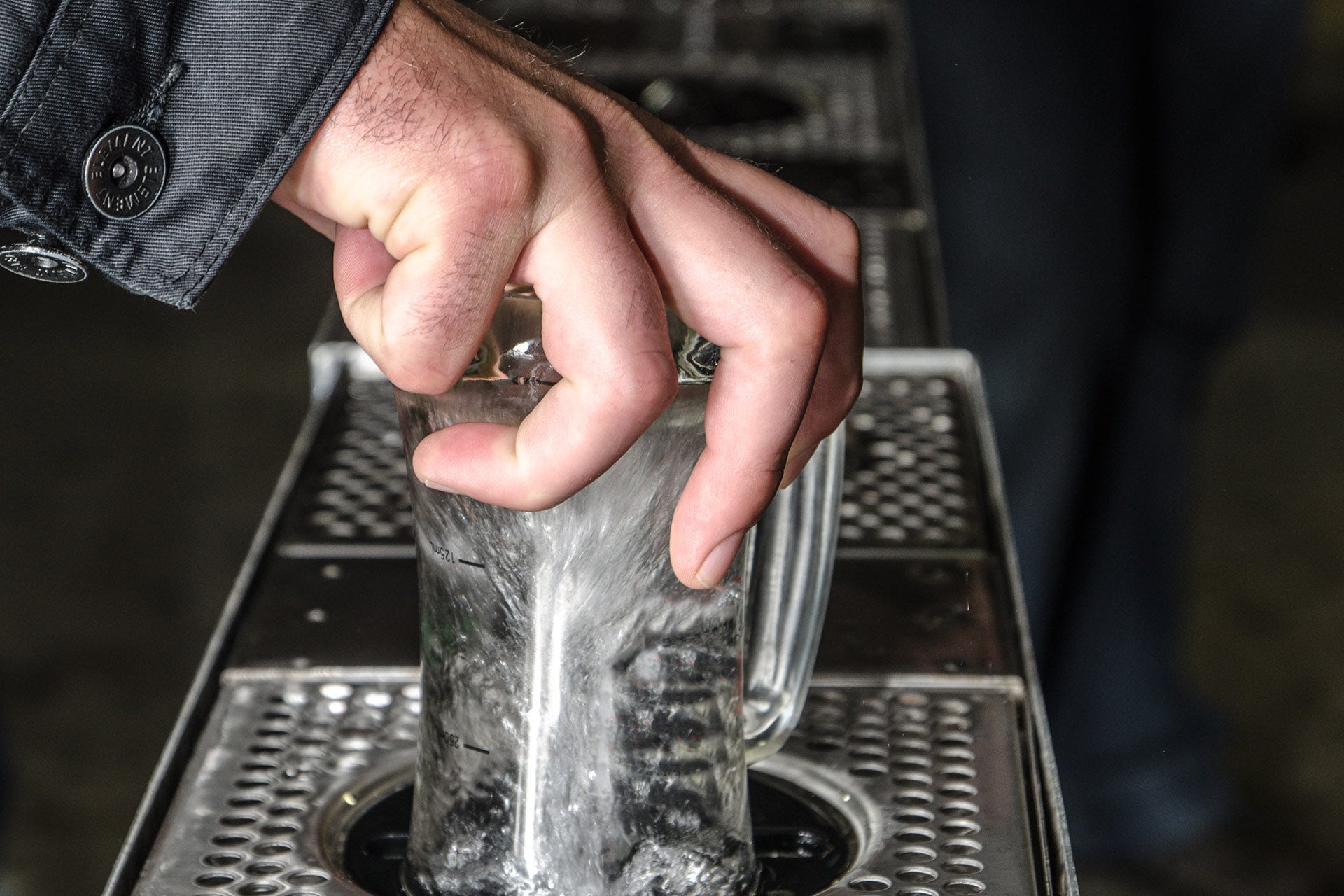Anybody can drink beer. Drinking beer smartly, however, is a tougher task. Having spent the better part of two decades imbibing as both an amateur and professional (writer, that is), from double-fisting Busch Light to sipping sparkling raspberry lambics from stemware, there are vital lessons necessary to become a better beer drinker. Whether you’re sipping your first IPA or someone who name checks favorite yeast strains, here are eight tips to up your beer IQ.

 Stop making a poor pour.
Stop making a poor pour.
Start with a clean glass: wash and rinse it well with cold water. Soapy and greasy residue, from fingerprints or lipstick, can negatively impact head formation. Tiny bubbles that cling to a beer glass are a bad look. While nobody likes being cheated out of precious ounces of beer, pouring a pilsner to a foamless brim is a bad call. Lustrous foam marks a well-made beer that’s easy on the eyes, nose and tongue. The cloud-like cap delivers a more potent aromatic experience. Foam also impacts mouthfeel and can contribute a pleasant creaminess, especially in wheat-rich styles like witbier.
 Check a beer’s date codes.
Check a beer’s date codes.
Deciphering a best-by date sometimes seems better suited for World War II code breakers. Breweries are trying to provide clearer messaging for a beer’s packaging dates, but knowing a Mexican lager’s birthday is half the battle. Certain styles, like IPAs, are better consumed closer to the packaging day, while stouts, barley wines and sours can better withstand, or even improve, with time. Remember, brewers run rigorous sensory panels to ensure beers will taste great within their suggested timeline, provided they’re stored properly. Which brings us to…

 Buy beer the right way.
Buy beer the right way.
Buying beer can be confusing, given the array of fruited sours, dessert stouts and whatever else brewers dream up. However, you can smartly whittle down options. Don’t buy bottles bathed in sunlight, one of beer’s mortal enemies. Ultraviolet light exposure creates the same chemical compound found in a skunk’s spray. Furthermore, select beer stored cold, especially hop-heavy styles like IPAs. Warm temperatures are a wrecking ball to aroma and flavor. Also, while walls of beer may inspire awe, too much stock often means too little turnover. A tighter, well-curated selection often ensures freshness.
 After the bombast, embrace subtlety.
After the bombast, embrace subtlety.
After a lifetime of light lagers, a fruity double IPA can be pure shock and awesome. With taste buds suddenly awakened, many drinkers seek out more flavor, more booze, more everything. Like potent California Zinfandels, you can only consume so many lumberjack-strength stouts before you cry uncle. Learn to embrace the subtler, though no less pleasurable, charms of lower-alcohol beers. Look to the herbal pilsner, agreeable helles lager or lightly fruity kölsch—beers with distinct personalities that unfold with each new embrace. It might not be love at first sip, but it will be by the 10th.
Subtle Suds
Helles Lager
Surly Brewing Hell
Weihenstephaner Original Premium
Pilsner
Peak Organic Fresh Cut
Samuel Adams Noble Pils
Kölsch
Reissdorf Kölsch
Schlafly Kölsch
 Don’t be afraid to dump a beer.
Don’t be afraid to dump a beer.
Great beer is wildly affordable, as diamond-class stouts and IPAs are sold for mere bucks. A mixed six-pack is a splendid way to sample a wealth of beers and self-educate. However, you don’t need to drink an entire bottle. It takes as little as three sips to acclimate your palate and get a true snapshot of a beer. If the beer doesn’t titillate your taste buds, there’s no shame in dumping it.

 Revisit the standard-bearers.
Revisit the standard-bearers.
Beer mavens tend to focus on cutting-edge breweries. Forever looking forward means rarely looking back, and classics get too often overlooked. Don’t be afraid to fill your fridge with beers from early American trendsetters like Sierra Nevada and New Belgium, as well as European masterpieces. They deliver something that’s often lacking in the new guard: dependability. Plow through a few, and you’ll soon understand why these beers stood the test of time.
Classics to (Re)discover
Pilsner
Pilsner Urquell
Victory Prima Pils
Pale Ale
Deschutes Mirror Pond
Sierra Nevada Pale Ale
IPA
Ballantine IPA
Stone IPA
Saison
Fantôme Saison
Saison Dupont
Belgian Trappist Beer
Chimay Première Dubbel
Westmalle Tripel
Strong German Lager
Ayinger Celebrator Doppelbock
Spaten Optimator

 To get to know a brewery, travel to a taproom.
To get to know a brewery, travel to a taproom.
Bars swap out brands and taps in swift fashion, meaning even the best-loved beers rarely stay for long. Rather than lament a one-pint stand, get to know your brewery better at its tasting room. Most breweries have taprooms where you can sip goods straight from the source, and they often include specialty releases and one-offs that rarely leave the premises. Moreover, tasting rooms express a brewery’s personality. You’ll thrash to heavy metal at Denver’s Trve Brewing Co, and soak in chill, SoCal-style vibes at Bissell Brothers in Portland, Maine.
 Arm yourself with food-pairing basics.
Arm yourself with food-pairing basics.
Smart, drink-centric restaurants have cicerones, which are basically beer sommeliers. They’ll know how to pair that duck dish with a figgy Belgian dubbel. If no experts are available, follow a few basic rules. Bright, acidic goses and Berliner weisses excel as aperitifs, or alongside salad and raw seafood. For main courses, malt-forward Vienna lagers and brown ales are marvels with roasted meats and pizzas.
Last Updated: May 4, 2023















